Heading out the door? Read this article on the new Outside+ app available now on iOS devices for members! Download the app.
Have you been squatting up a storm without seeing your posterior plump up with muscle, or do your chin-ups triple your trap size without building your back? Then it’s time to give those lazy muscles a wake-up call with some pre-activation exercises.
Pre-activation — aka corrective exercise, active warm-up or post-activation potentiation (PAP) — is a technique that involves “turning on” a target muscle with an isolation or conditioning exercise before the main lift or activity you’re doing. A lot of muscles are lazy or shut down (the gluteals, lats, abdominals and deeper core muscles are notorious slackers), usually because of improper mechanics or lifestyle trends, such as sitting a lot during the day. The inactivity of these muscles means that other muscles — like your quads, lower back and traps — take over as a result, reducing the effectiveness of the exercise, creating a poor movement pattern and putting you at risk for injury. And you clearly don’t get the results you want, which can lead to disappointment with your training.
Pre-activating the muscles you’re trying to work with a specific movement will kick-start your neural drive — specific parts of your nervous system — and get you on the road to the results you’re after.
Mind Over Muscle
But it’s not enough just to do the movement — you’ve also got to get your gray matter involved. It’s not a matter of mind over muscle but rather mind into muscle. Research has shown that focusing on a muscle and/or visualizing it contract can improve activation and hypertrophy results, meaning your muscle will grow. So if you concentrate hard on your glutes when doing a one-legged bridge, for example, you are better able to replicate the sensation of the intense gluteal contraction and make a deadlift more effective. This neuromuscular training — getting your body to do exactly what your brain tells it to — will eventually become an unconscious pattern that your muscles automatically follow, but for now, it takes practice.
The key with pre-activation is to wake up and engage the proper muscles without pre-fatiguing them, thereby making them less active. In order to prime the neuromuscular system to turn on those fibers without pooping them out, pre-activation exercises have to be done either at a light to moderate intensity or at a high intensity for just a few reps.
With all this in mind — it seems more complicated than it really is — integrate the corresponding pre-activation moves into your warm-up before the indicated main exercises and target muscles. Do one to three sets of 10 to 12 reps using light to moderate resistance if you’re a newer workout warrior or three to five reps using heavier resistance if you’re more advanced. Remember: Don’t rush and instead focus on the entire contraction — positive and negative, up and down — with your brain and your body working in unison!
The Moves
Legs & Glutes
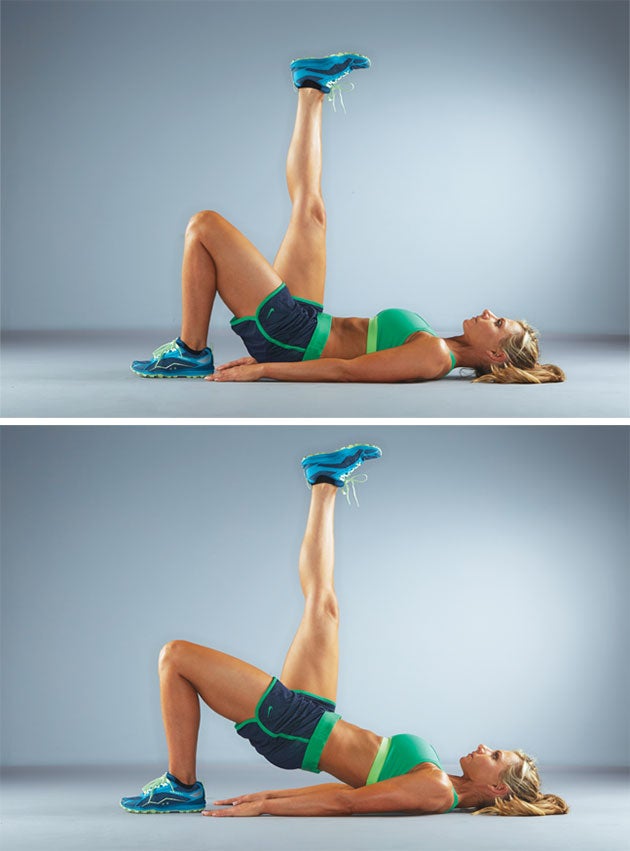
Pre-Activation Move: One-Legged Bridge
Target Muscle: gluteus maximus
Main Exercises: deadlift, stiff-legged deadlift, kettlebell swing, squat
Setup: Lie on your back with your knees bent, heels on the ground, arms extended along your sides. Extend one leg straight up toward the ceiling over your hip.
Action: Keeping your head and shoulders relaxed, lift your hips up and squeeze the glute on your working leg. When your hips align with your rib cage, reverse the move and lower down until you just tap the ground lightly, then go back up to maintain tension in the glutes.
Tip: Avoid tucking the pelvis under or arching your back at the top; your hips should stay neutral, and your glutes should be active throughout.
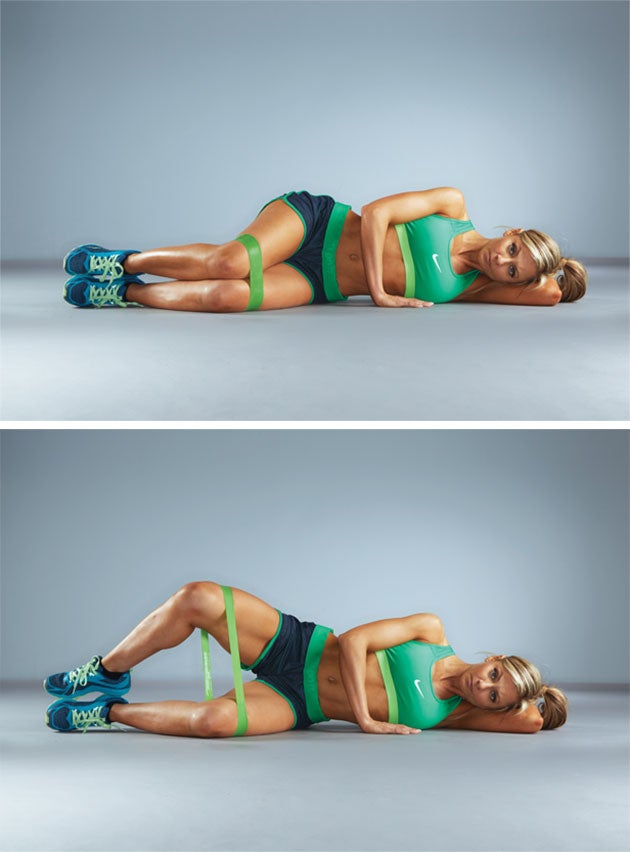
Pre-Activation Move: Clamshell with Resistance Loop
Target Muscle: gluteus medius
Main Exercises: squat, sumo squat, lunge, lateral lunge
Setup: Lie on your side with your knees bent 90 degrees, and secure a resistance loop around both legs just above the knees. Rest your head on your biceps to keep your neck aligned.
Action: Keeping your heels together and your hips stacked, lift your knee by rotating your hip to “open” the clamshell as far as you can without rocking backward. Slowly lower to the start and repeat. Make sure to feel the tension from the loop in the concentric and eccentric portions of the rep.
Tip: Sometimes it’s hard to locate the gluteus medius. Place a hand on that meaty part just behind your hipbone to help locate it and visualize which muscle you should be activating.
Back & Chest
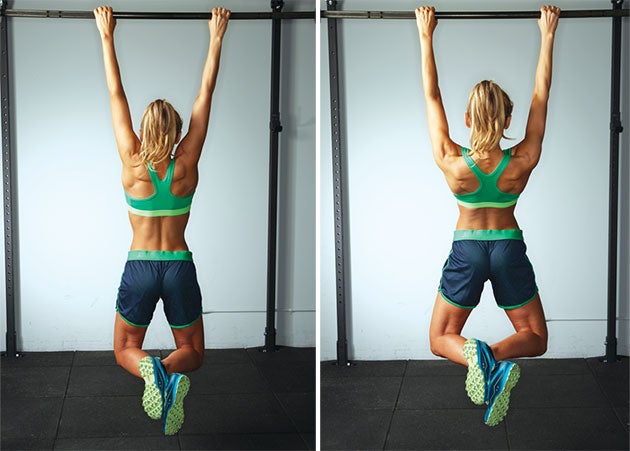
Pre-Activation Move: Scapular Pull-Up
Target Muscles: rhomboids, lower traps, lats
Main Exercises: pull-up, chin-up, lat pulldown, seated row, bent-over row
Setup: Hang from a pull-up bar with a shoulder-width, overhand grip. Your knees can be bent or straight, but keep your abs braced to avoid swinging.
Action: Keeping your arms straight, shrug your shoulders toward your ears to lower your body 1 to 2 inches. Then squeeze your lats and pull your shoulder blades together to raise your body 1 to 2 inches. Hold at the top with your shoulders perfectly packed a few seconds before repeating.
Tip: Crush your grip on the bar to increase the total neural drive to your target muscles.
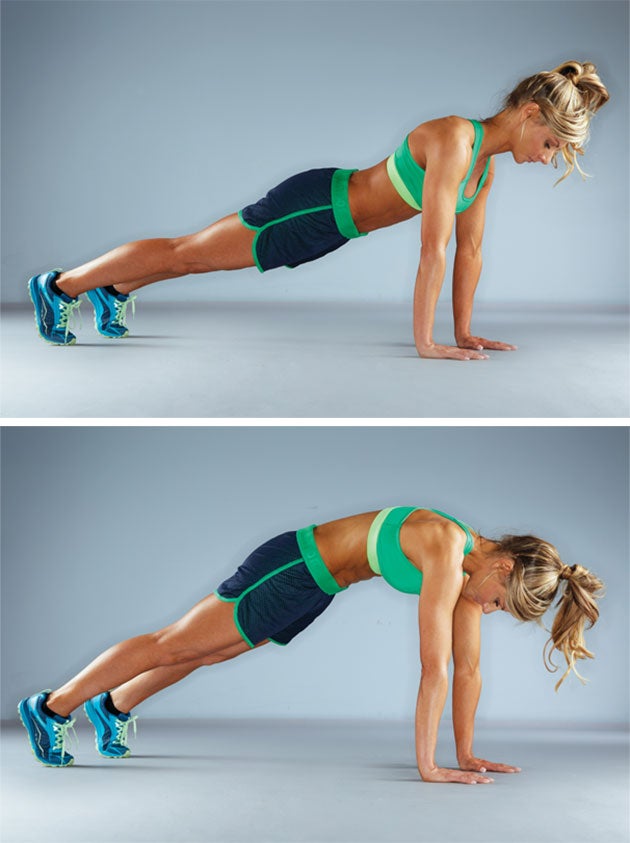
Pre-Activation Move: Push-Up Plus
Target Muscle: serratus anterior
Main Exercises: pullover, straight-arm pulldown, push-up, chest press
Setup: Start in plank with your hands placed directly under your shoulders. Keep your torso taut and maintain a straight body from head to toes.
Action: Keeping your arms straight, squeeze your shoulder blades together and slowly lower your body between your arms a couple of inches. Then press upward, driving through your palms and spreading your shoulder blades apart, slightly rounding your upper spine at the top.
Tip: This move is deceptively small, but it helps engage the smaller muscles in your rib cage that keep your shoulder blades from “winging,” or flaring out.
Shoulders
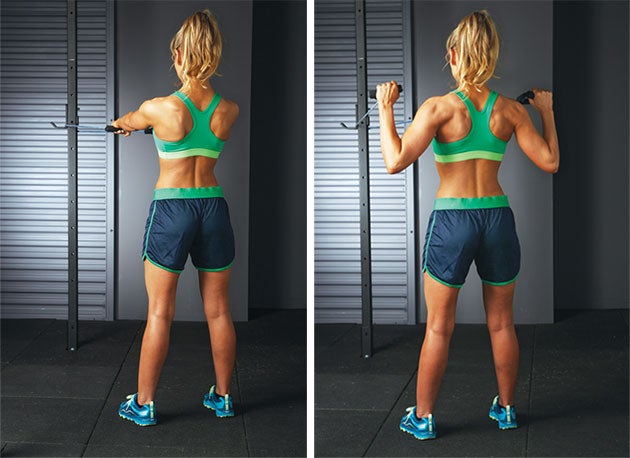
Pre-Activation Move: Resistance-Band W
Target Muscle: rotator cuff
Main Exercises: rear delt flye, pulldown, overhead press, push press.
Setup: Secure a resistance band around a squat cage or other stable object at chest height. Grab both handles and step backward until the band is taut. Your arms should be extended straight out, palms down.
Action: Drive your elbows back to pull the band into your chest, then drop them down slightly at the peak contraction to form a W. Pause briefly, then return slowly to the start.
Tip: The tendency here is to lean backward. Keep yourself upright and stable by bending your knees and hips into a quarter-squat and setting your core after each rep.
Core
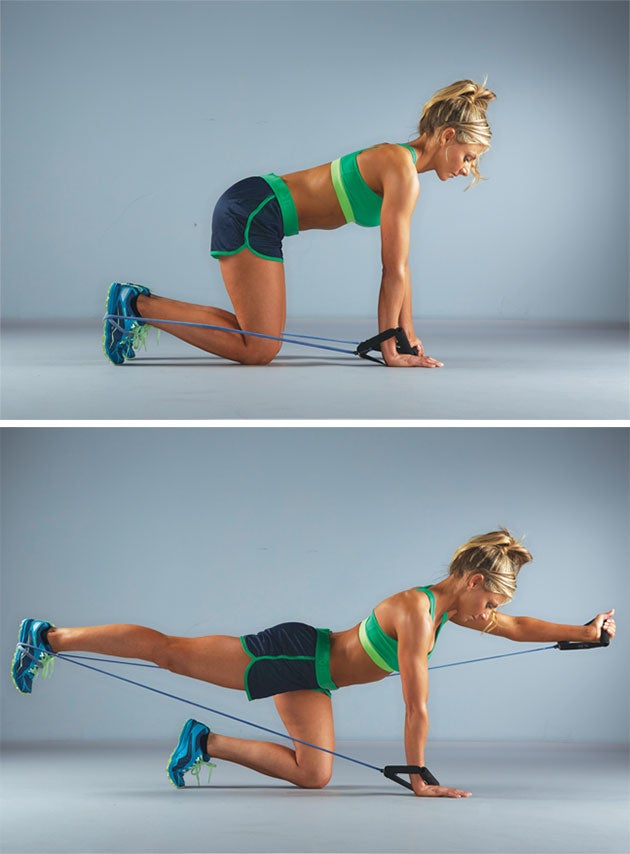
Pre-Activation Move: Resistance-Band Bird Dog
Target Muscles: core
Main Exercises: any
Setup: Start on all fours and secure the center of a resistance band around the middle of one shoe. Hold a band handle in each hand and position your knees directly underneath your hips and your hands underneath your shoulders, spine neutral.
Action: Maintaining a neutral spine, extend your working leg and opposite arm — palm up — away from each other until they are both level with your back, parallel to the ground. Slowly return to the start. Do all reps on one side before switching.
Tip: Adjust the tension on your leg and glute with your stabilizing hand: Add more by choking up on the band.
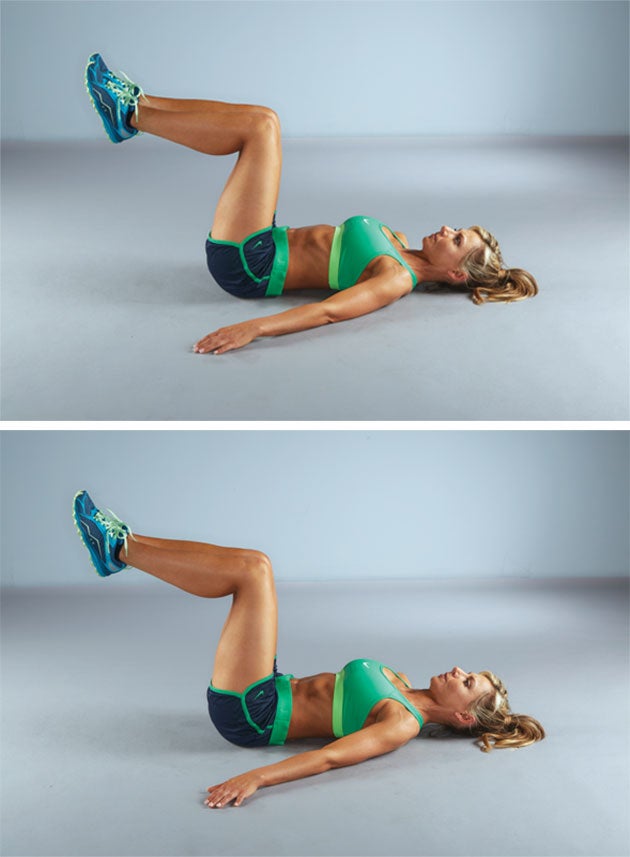
Pre-Activation Move: The Lewit
Target Muscles: core, internal obliques
Main Exercises: any overhead movement (overhead squat, overhead press, etc.)
Setup: Lie on your back with your knees over your hips and bent 90 degrees. There should be a natural arch in your lower back so you can fit your palm underneath. Extend your arms along your sides without pressing down into the floor.
Action: Find your neutral spine position by rocking your hips back and forth a few times gently on your tailbone. Then hold your legs steady and take three normal breaths. At the end of the third breath, purse your lips and forcefully exhale any remaining air from your lungs, compressing it into your belly. Reset your pelvis, if necessary, to perform the next three breaths.
Tip: Don’t flatten your lower back into the floor. Instead, try to mimic the same neutral spine position that you lift with. This will train your internal obliques to actively align your rib cage when doing overhead-pressing exercises.
Can You Pre-Activate For Cardio?
Yep. In fact, endurance athletes may even benefit more than power athletes from pre-activation. One French study compared endurance and power athletes during 10 minutes of repeated contractions at about 50 percent of their max. The endurance athletes showed a more prolonged potentiation and less fatigue than the power athletes, indicating that pre-activation may actually help delay fatigue, particularly if it is done at lower intensities. Several other studies researched pre-activation as it relates to performance in sports, and they found that a heavy strength exercise done four to 12 minutes before a competition caused an increase in speed or power in jumping or sprinting activities. Researchers point out that the key is to avoid complete fatigue of the muscles, just activating them enough to increase their sensitivity to stimulation.
We independently source all of the products that we feature on oxygenmag.com. If you buy from the links on our site, we may receive an affiliate commission, which in turn supports our work.